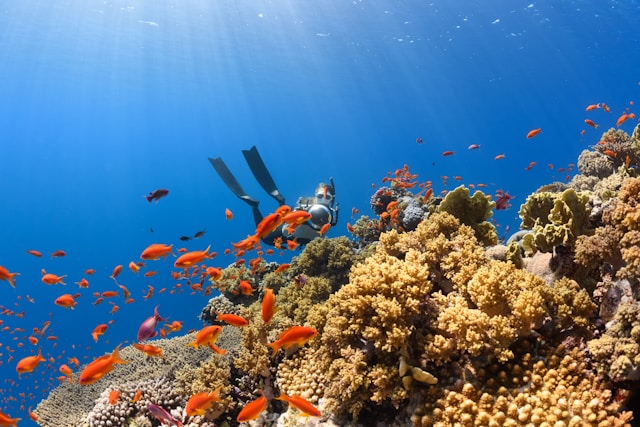Countries & Regions That Have Banned Conventional Sunscreens (and Why You Should Care)
The sunscreen you use doesn’t just affect your skin — it can impact the entire planet, especially our oceans. That’s why several countries and popular tourist destinations have taken bold steps to ban or restrict conventional sunscreens that contain harmful chemicals.
These bans are part of a growing movement to protect coral reefs and marine life from the damaging effects of certain sunscreen ingredients. And it’s a wake-up call for all of us to choose safer, reef-friendly alternatives.
🚫 Why Are Sunscreens Being Banned?
Certain chemical UV filters — mainly oxybenzone (benzophenone-3) and octinoxate — are proven to:
- Disrupt coral reproduction and growth
- Cause coral bleaching
- Harm fish and marine life even in tiny concentrations
Other controversial ingredients include octocrylene, avobenzone, and nano-particles of zinc oxide or titanium dioxide (which may harm aquatic ecosystems if not coated or non-nano).
🌴 Countries & Destinations That Have Banned Harmful Sunscreens
🇵🇼 Palau (Pacific Islands)
- Status: First country to issue a full ban (Jan 1, 2020)
- What’s banned: 10 chemical sunscreen ingredients including oxybenzone, octinoxate, octocrylene, parabens, triclosan, and more
- Why: To protect its world-renowned coral reefs and marine ecosystems
- Penalty: Fines for importers, retailers, and tourists using banned sunscreens
U.S. Virgin Islands
- Status: Ban in effect since March 2020
- What’s banned: Sunscreens containing oxybenzone, octinoxate, and octocrylene
🇺🇸 Hawaii (USA)
- Status:
- 2021: Ban on oxybenzone & octinoxate
- 2023: Expanded to include octocrylene & avobenzone
- Why: To protect coral reef health and local marine life
Mexico (Protected areas)
- Where: Bans in place in specific eco-tourism zones such as:
- Cozumel
- Cancun
- Xcaret
- Riviera Maya
- Tulum
- Note: Enforcement varies, but eco-parks often check bags and offer mineral sunscreen alternatives
🇧🇿 Belize
- Status: Ban on sunscreen containing oxybenzone and octinoxate in marine reserves and tourist areas
🇧🇿 Aruba
- Status: Ban took effect in 2020
- What’s banned: Sunscreens with oxybenzone
🇧🇴 Bonaire
- Status: Ban passed in 2018
- What’s banned: Oxybenzone-based sunscreens (complete ban on import and sales)
🌊 The Bigger Picture: Protecting Marine Life
Over 14,000 tons of sunscreen wash into coral reef areas every year. Even small concentrations of certain chemicals can:
- Damage coral DNA
- Inhibit growth and photosynthesis
- Kill young coral
- Affect fish and other marine species
Switching to a mineral-based, reef-safe sunscreen is one of the simplest ways you can make a real environmental impact.
✅ What to Use Instead
Look for sunscreens labeled:
- Reef-safe
- Mineral-based (zinc oxide or titanium dioxide, non-nano)
- Free from oxybenzone, octinoxate, octocrylene, parabens, and synthetic fragrance
Bonus: You can even make your own with safe, natural ingredients — [check out our guide here].
🌞 The Bottom Line
If you’re heading to tropical destinations or just want to protect your skin and the planet, avoid chemical sunscreens and choose natural, reef-safe alternatives.
It’s not just about avoiding fines — it’s about being part of the movement for clean beauty and a healthier Earth.
Want a DIY recipe for your own natural sunscreen?
🎁 “Make Your Own Reef-Safe Balm at Home”
Cheers,
La Mayca x
